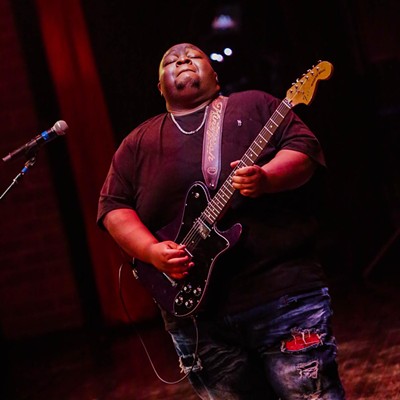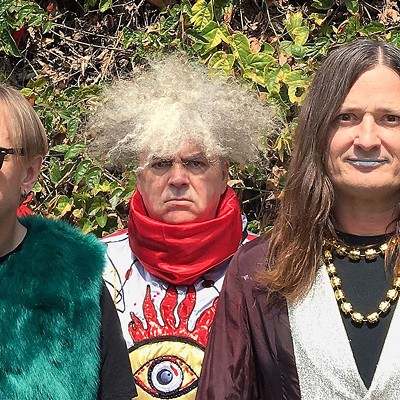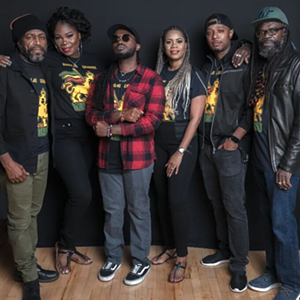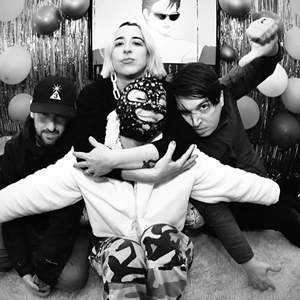It’s been a little over two weeks since the final night of the 2007 Savannah Music Festival, and by now it is likely you have seen or heard some of the numbers floating around in the wake of this ever-growing annual showcase of both traditional art music and contemporary roots genres.
As was expected by many who’ve been carefully watching this event’s ascent over the past half-decade, attendance was up, the percentage of ticket holders who came in from out of town specifically for the concerts grew, and the total economic impact of the eighteen-day celebration took a staggering leap forward.
That’s welcome news to both Executive and Artistic Director Rob Gibson and his staff, as well as to the board which oversees the SMF. It reaffirms that the organization is generally perceived as being on the right path toward reaching the long-term goals set out by Gibson when he was brought in to steer the former Savannah Onstage vocal competition into ambitious new waters.
A quick look at the fiscal and logistical data paints a rather rosy picture of what could be termed a “hard sell” of an event to the average person (even to those not well-versed in the minutiae of such reports).
Over the course of eighteen days, the SMF produced 109 events (a significant portion of which were offered completely free of charge to the general public) and showcased nearly 600 artists from across the globe. Throw in more than twenty educational concert experiences for area youth, master classes by some of the same stellar talent, pre-show lectures, a three-day gospel showcase, two-day high school jazz band workshop, and the Music Festival quickly and handily comes into focus as the crowning cultural event in a town known far and wide for getting its art on.
When Gibson first took the reins of this event and broadened its scope (at a time when the non-profit organization was deeply in debt), he predicted it would take approximately five years to emerge from that sea of red ink. It now seems he was fairly on the money with that estimate.
2007 SMF ticket revenue rose seventeen percent over 2006, bringing in around $725,000. About eighty percent of all available tickets were sold — a phenomenal amount given the breadth and caliber of the artists featured in the program.
Better still for both the SMF and the city, forty-five percent of the estimated 55,000 attendees do not call Savannah home, and fifty-two percent of those visitors cited the festival as their main reason for coming. Over half of first-time attendees live more than 200 miles from here.
Maria Lancaster is the festival’s Director of Marketing and Communications, and those figures are music to her ears.
“We can see who’s bought tickets, and we get a good sense of when we have patrons who are bringing in friends from out of town, which was fairly evenly split. What was most interesting was the larger numbers now coming from Bluffton and Hilton Head. We’re not only increasing our draw locally in Chatham County, but from the shorter distance outlying areas as well. And they’re coming to more events. A person who might have gone to one or two events last year and spent a total of $150 to $200, this year they spent maybe $800 or $900 and hit multiple events. That’s really something! They also stayed longer. Out-of-towners stayed five days on average, whereas last year it was somewhere between three and four.”
It’s those out-of-town dollars and two additional nights of lodging that are key to the longevity and continued growth of the SMF. Being able to demonstrate momentum in those areas leads to increased funding from the city’s Cultural Affairs Department, and spurs private donations and personal and corporate sponsorships which are the lifeblood of an incredibly expensive undertaking such as this.
Using a calculation model provided by both the state’s Department of Economic Development and Georgia State University, the 2007 SMF represents a total economic impact of over $20 million. That’s almost $5 million more than last year.
Gibson says he’s very happy the festival is being embraced as warmly as it is, but in a sense, he’s not too surprised.
Sounding brighter and more refreshed than he often seemed during the midst of the lengthy, marathon event —that regularly saw him zipping frantically from venue to venue by bicycle to introduce artists and oversee as many productions as possible— he reiterates the timetable that he heralded when he first agreed to helm the SMF.
“I would say this year achieved our expectations. But I look at it not only in terms of 2007, but for all the five years that I’ve been involved. There was a five year plan to get to something like what people experienced at this festival.”
He also cautions against folks reading too much into the loudly trumpeted news that at long last the SMF has surmounted its outstanding debt.
“That just means we’re not operating in red ink,” he chuckles. “Now, that’s certainly a huge relief, but it doesn’t mean that we have some kind of huge cash reserve! Working in the arts in our time is an ongoing challenge. A real struggle. But it’s something we all believe in very strongly.”
He and Lancaster both laud the efforts of TouchPoll of Georgia, a computer-based research firm contracted by the SMF to provide accurate, detailed entry and exit polls of festival attendees. It’s that data that fuels the all-too-critical statistics used to calculate the SMF’s progress and its fiscal affects on the community at large.
“The fact they use portable computers is great,” says Lancaster. “Literally, three days after the festival, I received the results.”
Gibson says he knows firsthand that TouchPoll is doing a thorough job, and feels secure in their calculations.
“They’re at so many events, and they’re hitting up both young and old people. For example, both my parents and my wife’s parents were visiting during the festival, and they all got interviewed. I mean, I even saw Gregg Allman being interviewed! (Laughs) he came out the back door of one of the theatres, just as I rode by on my bike. The TouchPoll guy said to him, ‘Hey, can I talk to you for a second?’ He didn’t have any idea who Gregg was. The point is they’re getting a wide sampling and asking the right questions. How much are you spending per day? Did you eat before the show? That’s all very important info if you’re gonna do what we do — which I’d describe as a major event in Savannah for the purpose of cultural tourism.”
Gibson points out that while it’s tempting to imagine audience members as falling into two general categories —those who live in Savannah or nearby and those who travel from afar specifically to catch a show by a favorite artist— in reality, there is another swath of attendees that often goes unnoticed: accidental patrons.
These folks (most of whom live nowhere near Savannah) stumble upon the festival quite by happenstance, but wind up making it a focal point of their visit.
“You know, Savannah draws plenty of tourists. We find that people from, say, England or West Texas, who aren’t here for the festival — well, they try one of our concerts on a whim, get knocked out by the quality of the show, and wind up extending their stay several days. We just got an e-mail from a couple in England. They just kept saying to each other, ‘What should we see tomorrow?’ Many people who came out to see Susan Tedeschi had never seen Dianne Reeves —or even knew who she was, for that matter— and they got blown away. Gregg Allman’s wife for one.”
Maria Lancaster says that in retrospect, this was the very best SMF of the four she’s been involved with to date, and credits the growing positive feedback between the artists and their crowds for that.
“I really feel like they all connected this time around, she says. “Even in those events that were a bit lesser-known or more avant-garde. This year, folks just got into them more than in the past. That’s been building. It takes time for the education period. This year there was a certain level of trust present, and the artists felt it. I think more people were willing to accept things outside the norm of what they might usually have paid to see or would have attended for free.”
Gibson too, was overwhelmingly pleased with the totality of the 2007 SMF.
“To be honest with you, I try to see every single concert, or at least a portion of them,” he confides. “Occasionally I do get frustrated by decibel levels, which are usually controlled by soundmen that are not our employees. I often have arguments with these soundmen during performances or intermissions in hopes of making the overall production better. But outside of a few lunchtime events, I was extremely happy with the artistic quality of everything we put on the stage this year.”
For Lancaster, however, the continued diversification of SMF crowds mean as much to her as the caliber of the artists.
“The Mayor mentioned this, but I agree and think it’s important to note: this was the first SMF where we really saw the entire community come together at various concerts. Ages, races, income levels, single people, families, gays, it was just across the board. The Anoushka Shankar concert was a great example of that. There were young people, seniors, whites, blacks and Eastern Indians there. Younger people and those with less to spend were in the balcony, and those who could afford the expensive floor seats enjoyed it together. You can just feel it when that happens.”
























